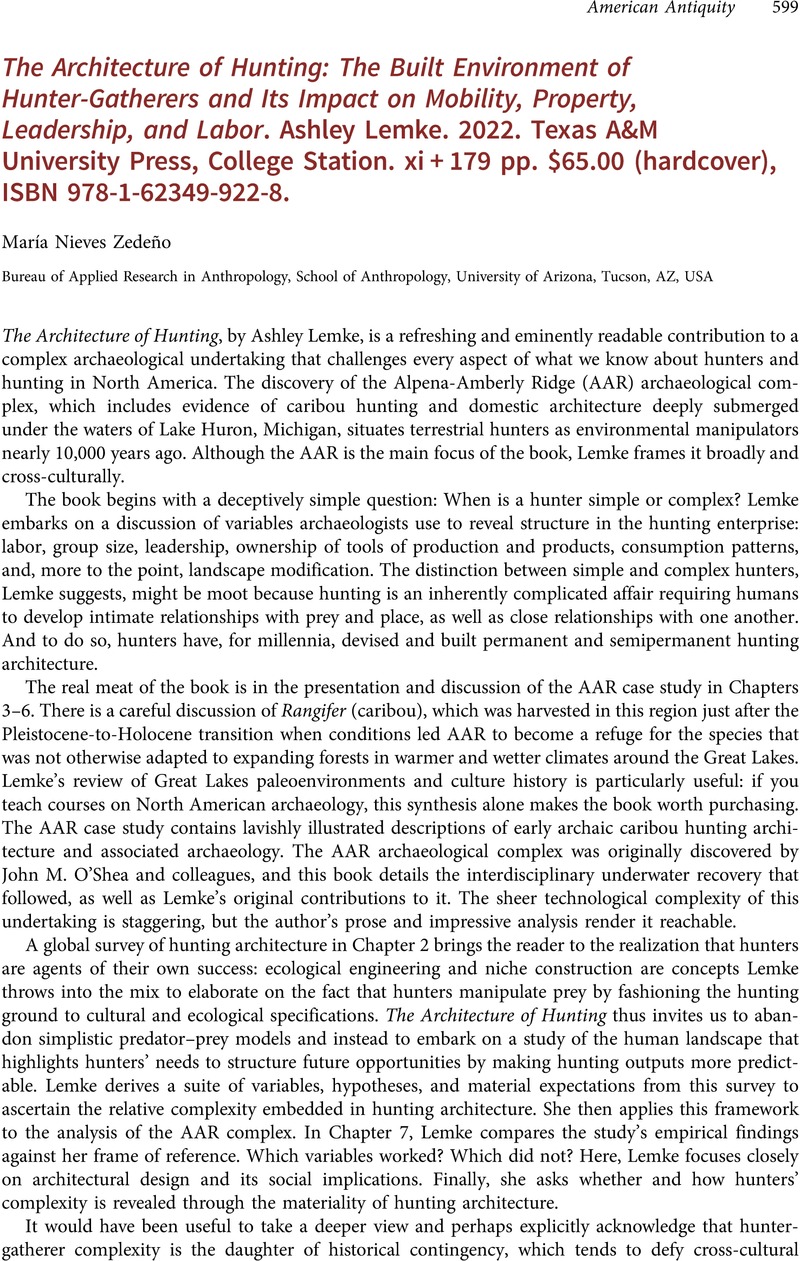No CrossRef data available.
Article contents
The Architecture of Hunting: The Built Environment of Hunter-Gatherers and Its Impact on Mobility, Property, Leadership, and Labor. Ashley Lemke. 2022. Texas A&M University Press, College Station. xi + 179 pp. $65.00 (hardcover), ISBN 978-1-62349-922-8.
Review products
The Architecture of Hunting: The Built Environment of Hunter-Gatherers and Its Impact on Mobility, Property, Leadership, and Labor. Ashley Lemke. 2022. Texas A&M University Press, College Station. xi + 179 pp. $65.00 (hardcover), ISBN 978-1-62349-922-8.
Published online by Cambridge University Press: 28 September 2023
Abstract
An abstract is not available for this content so a preview has been provided. Please use the Get access link above for information on how to access this content.

- Type
- Review
- Information
- Copyright
- Copyright © The Author(s), 2023. Published by Cambridge University Press on behalf of the Society for American Archaeology


